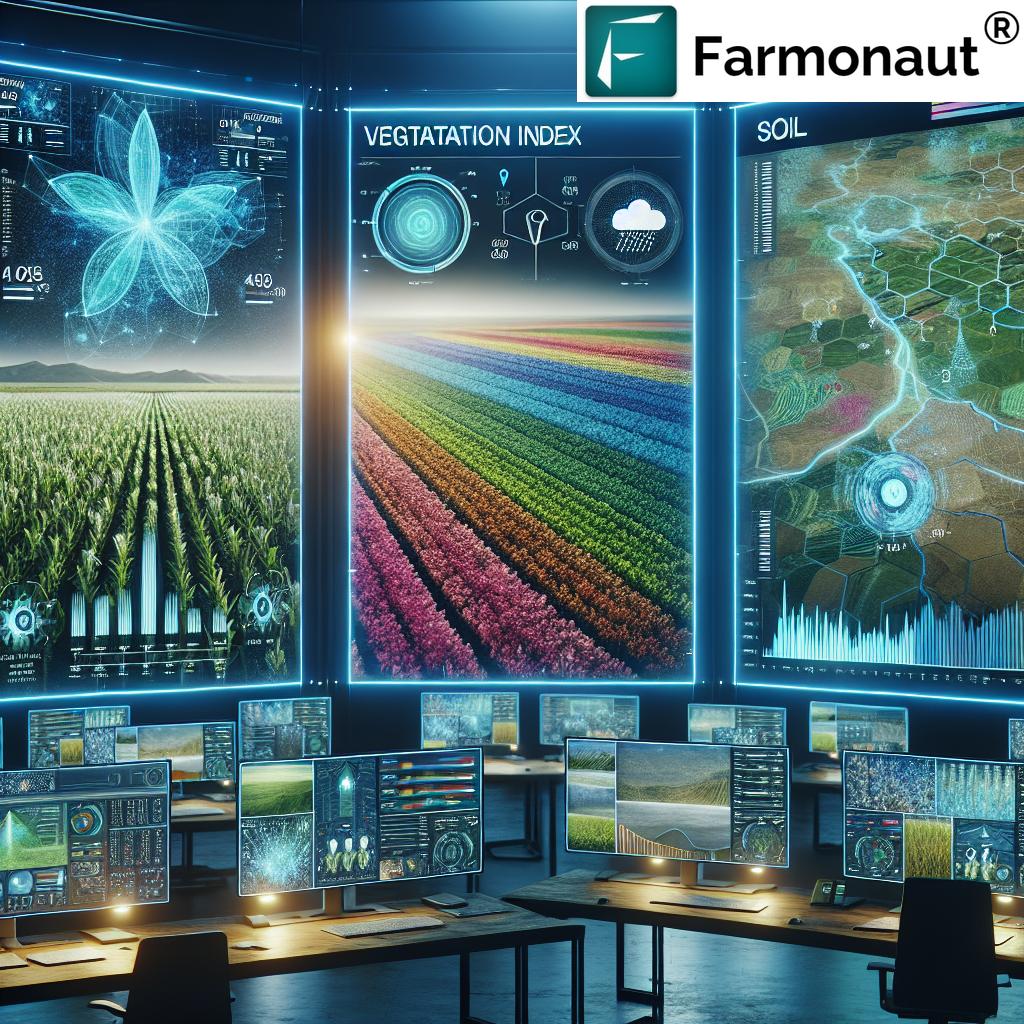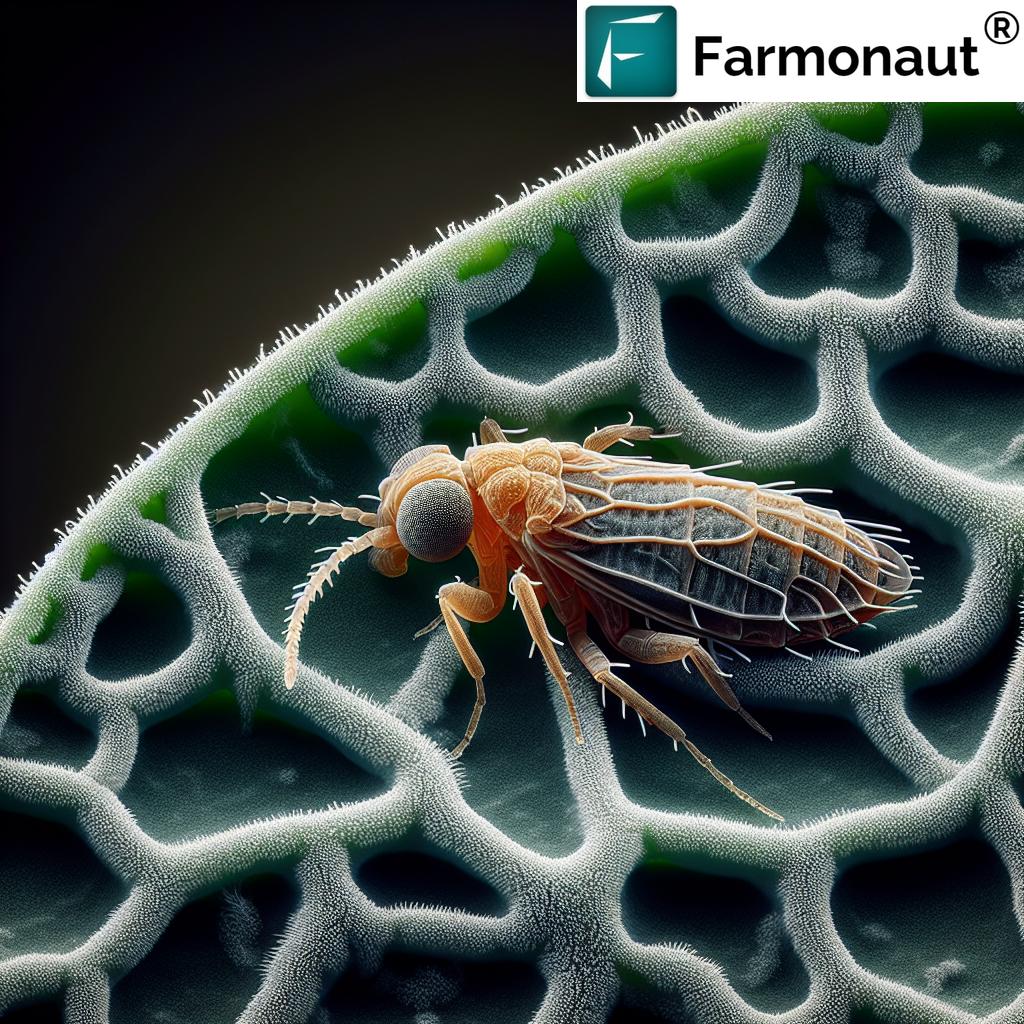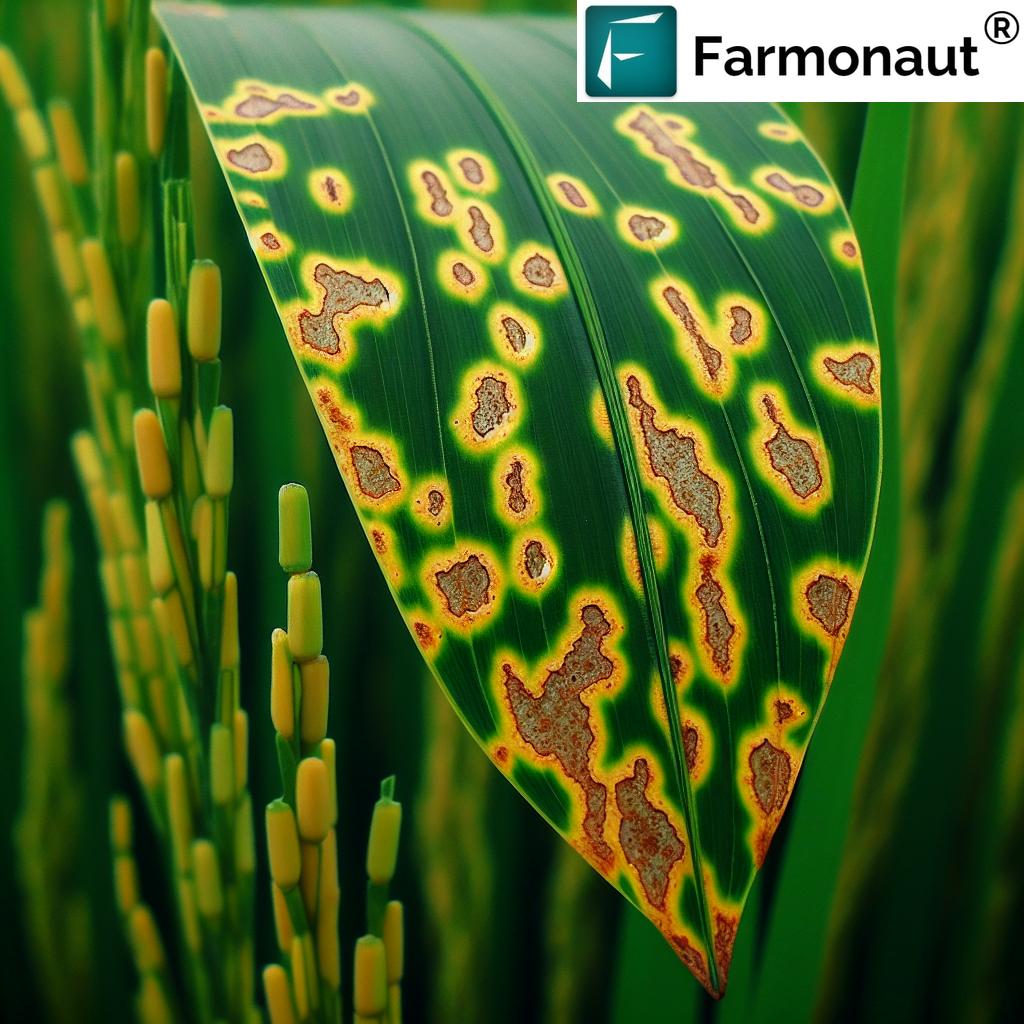Identifying Crop Damage: A Comprehensive Guide to Agricultural Diseases, Pests, and Nutritional Deficiencies for Growers
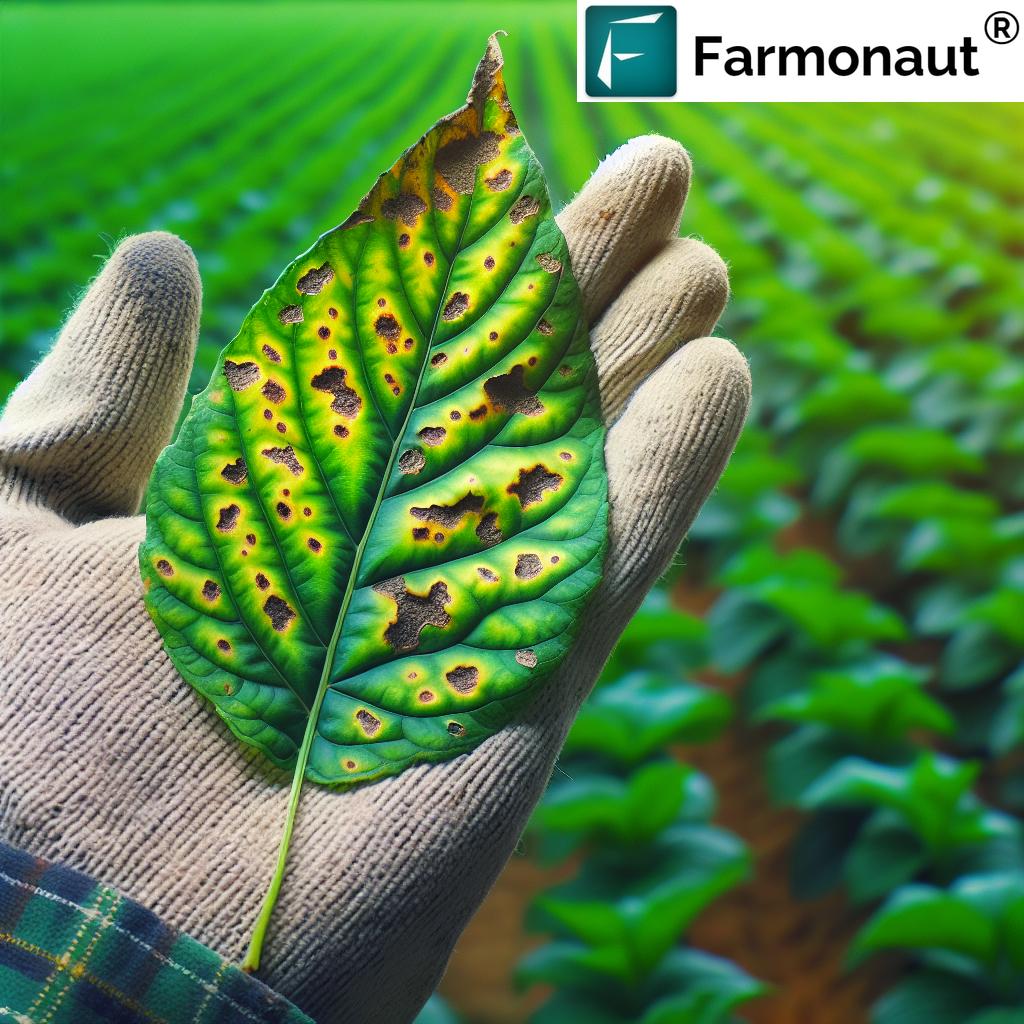
As agricultural experts and innovators at Farmonaut, we understand the critical importance of early identification and management of crop issues. In this comprehensive guide, we’ll explore the various challenges faced by growers in maintaining healthy crops and provide valuable insights on how to identify and address damage caused by diseases, pests, and nutritional deficiencies.
The Importance of Early Detection in Crop Health Management
In the world of agriculture, timing is everything. Early detection of problems can mean the difference between a bountiful harvest and significant losses. As growers, it’s crucial to be vigilant and proactive in monitoring the health of your plants. Let’s delve into why early detection is so vital:
- Minimizes crop losses
- Reduces the need for extensive chemical treatments
- Allows for targeted interventions
- Improves overall crop quality and yield
- Enhances farm profitability
At Farmonaut, we’ve developed cutting-edge satellite-based technology to aid in early detection and management of crop issues. Our system provides real-time insights that can help you identify problems before they become severe.
Common Crop Diseases and Their Symptoms
Crop diseases can be devastating if left unchecked. Here, we’ll discuss some of the most common diseases affecting various crops and their symptomatic presentations:
1. Fungal Diseases
Fungal diseases are among the most prevalent issues in agriculture. They can affect various parts of the plant and often thrive in moist conditions. Some common fungal diseases include:
- Powdery Mildew: Appears as a white, powdery coating on leaves, stems, and sometimes fruits.
- Rust: Manifests as reddish-brown pustules on leaves and stems.
- Fusarium Wilt: Causes yellowing and wilting of leaves, often starting from one side of the plant.
2. Bacterial Diseases
Bacterial diseases can spread rapidly under favorable conditions. Some common bacterial diseases include:
- Bacterial Leaf Spot: Appears as dark, water-soaked lesions on leaves, often with a yellow halo.
- Fire Blight: Causes a scorched appearance on leaves, branches, and fruits of affected plants.
- Bacterial Wilt: Results in rapid wilting and collapse of the entire plant.
3. Viral Diseases
Viral diseases are often transmitted by insects and can be difficult to control. Some common viral diseases include:
- Mosaic Viruses: Cause mottled or streaked patterns on leaves.
- Leaf Curl Virus: Results in curling and distortion of leaves.
- Tomato Spotted Wilt Virus: Causes stunted growth and spotted or bronzed leaves.
Early identification of these diseases is crucial for effective management. Our Farmonaut satellite system can detect subtle changes in crop health, alerting you to potential disease outbreaks before they become visible to the naked eye.
Identifying and Managing Crop Pests
Pests can cause significant damage to crops if not managed properly. Here’s an overview of common crop pests and how to identify their presence:
1. Insect Pests
Insect pests are among the most common and destructive threats to crops. Some examples include:
- Aphids: Small, soft-bodied insects that cluster on plant stems and leaves, causing stunted growth and leaf distortion.
- Caterpillars: Larvae of various moth and butterfly species that feed on leaves, fruits, and stems.
- Whiteflies: Tiny, white, winged insects that feed on plant sap and can transmit viral diseases.
2. Mites
Mites are tiny arachnids that can cause significant damage to crops. Common mite pests include:
- Spider Mites: Cause stippling on leaves and can create fine webbing in severe infestations.
- Broad Mites: Cause distorted growth and bronzing of leaves.
3. Nematodes
Nematodes are microscopic worms that can damage plant roots. Symptoms of nematode infestation include:
- Stunted growth
- Yellowing of leaves
- Wilting despite adequate moisture
- Reduced yield
At Farmonaut, our satellite technology can detect changes in crop vigor that may indicate pest infestations, allowing for early intervention and targeted pest management strategies.
Understanding and Addressing Nutritional Deficiencies in Crops
Nutritional deficiencies can significantly impact crop health and yield. Identifying these deficiencies early is crucial for maintaining optimal plant growth. Here are some common nutrient deficiencies and their symptoms:
1. Nitrogen Deficiency
- Yellowing of older leaves, starting from the tips
- Stunted growth
- Reduced leaf size
2. Phosphorus Deficiency
- Dark green or purplish discoloration of leaves
- Stunted growth
- Delayed maturity
3. Potassium Deficiency
- Yellowing or browning of leaf edges
- Weak stems
- Reduced fruit quality
4. Iron Deficiency
- Interveinal chlorosis (yellowing between leaf veins) in young leaves
- Stunted growth
5. Magnesium Deficiency
- Interveinal chlorosis in older leaves
- Leaf curling
Our Farmonaut satellite system can detect changes in crop color and vigor that may indicate nutritional deficiencies, allowing for timely and targeted fertilizer applications.
Leveraging Technology for Crop Damage Identification
At Farmonaut, we believe in harnessing the power of technology to revolutionize agriculture. Our satellite-based crop monitoring system offers several advantages over traditional methods of crop damage identification:
| Aspect | Traditional Methods | Farmonaut Satellite System |
|---|---|---|
| Speed | Slow, requires physical inspection | Rapid, real-time monitoring |
| Accuracy | Subject to human error | High precision using multispectral imagery |
| Coverage Area | Limited to physically accessible areas | Extensive, can cover large farm areas |
| Early Detection | Often detects issues after visible symptoms appear | Can detect subtle changes before visible symptoms |
Our system provides growers with valuable insights that can help in early detection and management of crop issues. To learn more about how Farmonaut can benefit your agricultural operations, visit our app page.
Best Practices for Crop Health Management
While technology plays a crucial role in modern agriculture, implementing good farming practices remains essential. Here are some best practices for maintaining crop health:
- Crop Rotation: Rotate crops to prevent the buildup of soil-borne diseases and pests.
- Proper Irrigation: Ensure adequate and consistent watering to prevent stress and reduce susceptibility to diseases.
- Soil Testing: Regular soil testing helps maintain optimal nutrient levels and pH.
- Integrated Pest Management (IPM): Use a combination of biological, cultural, and chemical controls to manage pests effectively.
- Sanitation: Keep fields and equipment clean to prevent the spread of diseases and pests.
- Use of Resistant Varieties: Choose crop varieties that are resistant to common diseases in your area.
Combining these practices with the insights provided by our Farmonaut satellite system can significantly improve your crop health management strategy.
The Role of Images in Crop Damage Identification
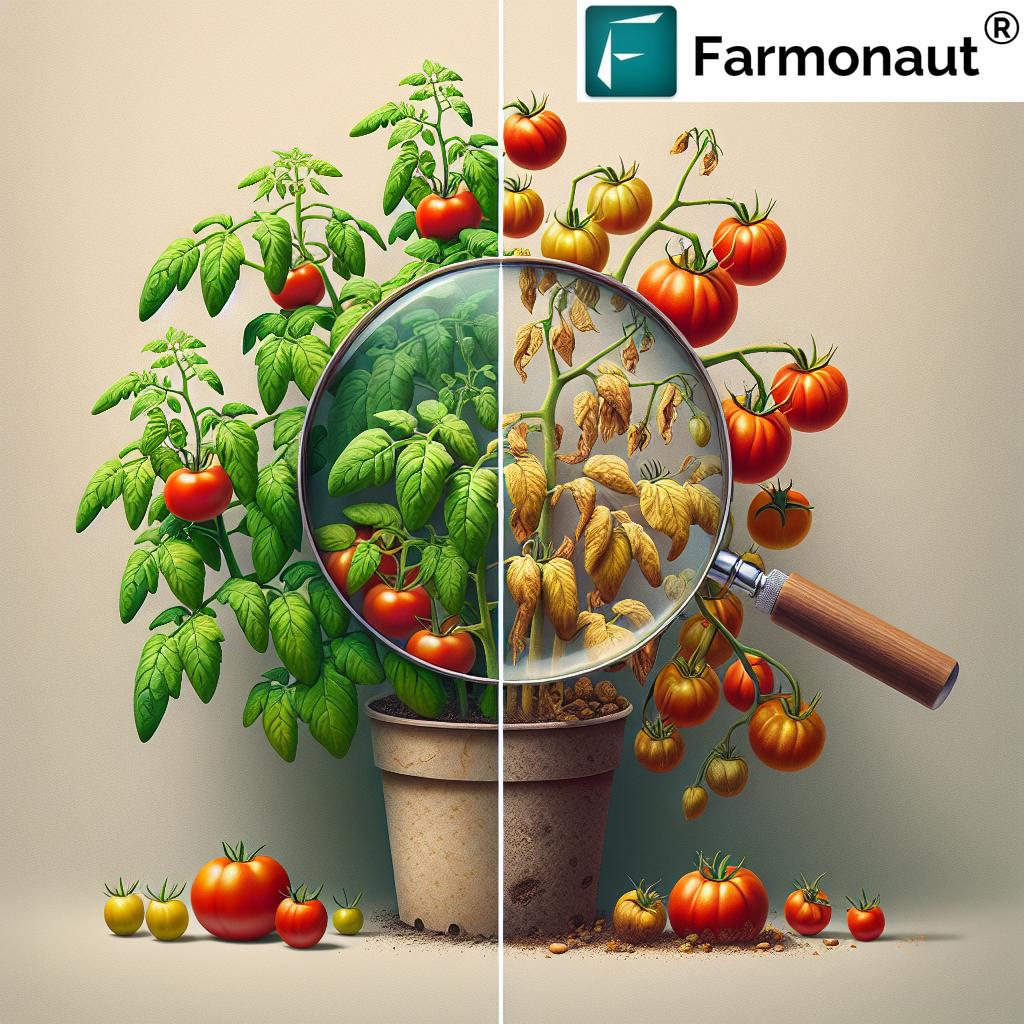
Images play a crucial role in identifying crop damage. Whether through satellite imagery or on-ground photography, visual data can provide valuable insights into crop health. Here’s how different types of images can aid in crop damage identification:
1. Satellite Imagery
Satellite images, like those provided by Farmonaut, offer several advantages:
- Wide coverage area
- Regular monitoring without physical field visits
- Ability to detect subtle changes in crop health using multispectral data
- Historical comparisons to identify trends
2. Drone Imagery
Drone-captured images can provide more detailed views of specific areas:
- High-resolution images for detailed analysis
- Ability to capture images on-demand
- Useful for inspecting hard-to-reach areas
3. Ground-Level Photography
Close-up images taken in the field are invaluable for identifying specific symptoms:
- Detailed views of individual plants or plant parts
- Useful for identifying specific diseases or pests
- Can capture subtle symptoms not visible from a distance
At Farmonaut, we combine satellite imagery with AI analysis to provide comprehensive insights into crop health. Our system can detect changes in vegetation health, soil moisture, and other critical metrics, allowing for early identification of potential issues.
Integrating Farmonaut’s Technology into Your Agricultural Practices
Incorporating Farmonaut’s satellite-based crop monitoring system into your agricultural practices can significantly enhance your ability to identify and manage crop damage. Here’s how you can get started:
- Sign Up for Farmonaut: Visit our app page to create an account and start monitoring your fields.
- Map Your Fields: Use our user-friendly interface to map your fields and start receiving regular updates on crop health.
- Interpret the Data: Our system provides easy-to-understand visualizations of crop health metrics. Look for areas showing unusual patterns or changes in vegetation health.
- Ground Truthing: When our system flags potential issues, conduct targeted field inspections to confirm and identify specific problems.
- Take Action: Use the insights provided by Farmonaut to implement timely interventions, whether it’s adjusting irrigation, applying fertilizers, or managing pests.
For developers interested in integrating our satellite data into their own applications, we offer a comprehensive API. Check out our API documentation for more information.
The Future of Crop Damage Identification
As technology continues to advance, the future of crop damage identification looks promising. At Farmonaut, we’re constantly innovating to bring you the latest in agricultural technology. Some emerging trends in crop damage identification include:
- AI-Powered Image Analysis: Advanced algorithms can analyze satellite and drone imagery to detect subtle signs of crop stress or damage.
- IoT Sensors: In-field sensors can provide real-time data on soil moisture, temperature, and other critical factors affecting crop health.
- Predictive Analytics: By combining historical data with current conditions, predictive models can forecast potential crop issues before they occur.
- Hyperspectral Imaging: This technology can detect crop stress and damage at even earlier stages than current multispectral imaging.
Stay tuned to Farmonaut’s updates as we continue to integrate these cutting-edge technologies into our platform, providing you with even more powerful tools for crop damage identification and management.
FAQs About Crop Damage Identification
Here are some frequently asked questions about identifying and managing crop damage:
Q: How often should I inspect my crops for damage?
A: Regular inspections are crucial. We recommend weekly visual inspections, supplemented by daily monitoring through Farmonaut’s satellite system for early detection of potential issues.
Q: Can Farmonaut’s system detect all types of crop damage?
A: While our system is highly advanced, it’s designed to detect changes in crop health that may indicate damage. Specific identification of diseases or pests often requires on-ground confirmation. Our system excels at pinpointing areas that need closer inspection.
Q: How can I differentiate between pest damage and disease symptoms?
A: Pest damage often shows physical signs like chewing marks or the presence of insects, while diseases typically cause discoloration, wilting, or abnormal growth patterns. When in doubt, consult with a local agricultural expert or use our AI advisory system for guidance.
Q: What should I do if I suspect nutritional deficiencies in my crops?
A: If you suspect nutritional deficiencies, conduct a soil test to confirm. Our satellite system can help identify areas of potential deficiency, allowing for targeted soil sampling and fertilizer application.
Q: How can I prevent crop damage in the future?
A: Implementing integrated pest management strategies, maintaining proper irrigation and nutrition, and using resistant crop varieties can help prevent damage. Regular monitoring with Farmonaut’s system can also aid in early detection and prevention of issues.
Conclusion
Identifying and managing crop damage is a critical aspect of successful agriculture. By combining traditional farming knowledge with advanced technologies like Farmonaut’s satellite-based monitoring system, growers can significantly improve their ability to detect and address issues early, leading to healthier crops and better yields.
We invite you to explore how Farmonaut can revolutionize your approach to crop management. Visit our website to learn more about our services, or download our app to get started:
For developers interested in integrating our satellite and weather data into their own applications, check out our API documentation.
Together, let’s grow towards a more productive and sustainable future in agriculture.





